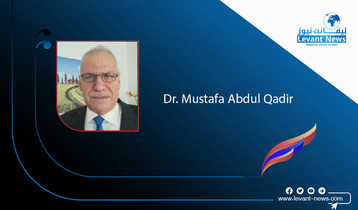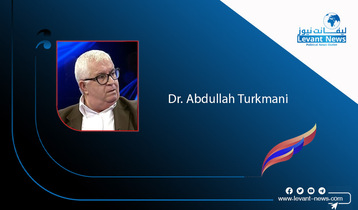-
Crisis and Its Resolution Amid International Changes

The Syrian crisis began after the popular uprising in 2011 and is considered one of the most complex conflicts of the 21st century. Initially sparked by peaceful protests demanding political reform and human rights, it escalated into an armed conflict following the Syrian regime's suppression of these protests. The war has evolved to involve multiple opposition groups, notably the Free Syrian Army and various armed Islamist factions, alongside internal rivalries between these factions. Currently, Syria experiences complicated dynamics involving the Syrian regime, the opposition, and the autonomous administration in the northeast, resulting in a multi-faceted internal conflict that has transformed into a regional and international struggle.
Regional powers such as Iran, Turkey, and Gulf states have intervened to support different parties in the conflict, with Russia backing the regime and the United States supporting the Syrian Democratic Forces in the fight against ISIS. Turkey has also intervened to support the opposition and armed factions.
The war has caused the displacement of millions of Syrians both internally and externally, leading to a severe humanitarian crisis and significant human rights violations. Geopolitical interests have clashed, as the United States and its allies vie against Russia and Iran for influence in the region. International actors have used the Syrian conflict as a tool to further their strategic interests.
### Dimensions of the Syrian Crisis
The Syrian crisis encompasses various dimensions, starting with the political situation characterized by international divisions. The crisis remains a battleground for major powers, with the United States, Russia, Iran, and Turkey competing for influence in the region. The Geneva and Astana processes have made little progress due to conflicting interests among domestic and foreign parties.
There is also contention over territorial control among the Syrian government, opposition, Syrian Democratic Forces, and Turkey-backed factions. Millions remain internally displaced or as refugees abroad, enduring difficult conditions and human rights abuses.
Economically, Syria faces inflation and poverty, featuring a severe collapse driven by international sanctions, infrastructure destruction, and corruption, with the local currency's collapse leading to a sharp rise in the prices of basic goods. Ongoing foreign influence complicates the crisis, intertwining the interests of regional and international powers.
The refugee issue places pressure on neighboring countries like Turkey, Lebanon, and Jordan, creating regional tensions. Furthermore, despite the decline of ISIS, some extremist groups continue to operate in certain areas.
### Solutions for the Syrian Crisis
The Syrian crisis remains one of the most complex issues on the international level, requiring comprehensive and sustainable solutions that go beyond superficial measures and consider the rights and aspirations of the Syrian people.
A comprehensive dialogue is essential to support peace initiatives that include all Syrian parties, including the government, opposition, civil society, and Kurdish forces, under the auspices of neutral international actors.
Decentralization of governance should be promoted to facilitate independent regional management while respecting Syria's diversity, alongside international guarantees enforcing a ceasefire commitment monitored by the United Nations. Cooperation with the international community is necessary to mitigate foreign interventions that complicate the crisis.
National reconciliation is also crucial, requiring awareness programs advocating tolerance and reconciliation among all components of Syrian society. Multiple rounds of negotiations, such as Geneva and Astana, have yet to yield decisive successes, and UN Security Council resolutions, such as Resolution 2254, calling for a ceasefire and political transition, need stronger implementation.
Syrian parties must unite in combating extremism and intensify efforts to weaken terrorist groups and prevent their resurgence.
### Conclusion
The Syrian crisis remains an open wound at the heart of the region, yet achieving peace is possible with the right political will, both domestically and internationally. The solution requires courage to face challenges and work toward building a new Syria that reflects the aspirations of all its citizens. The war in Syria is not merely an internal conflict; it represents a complex mix of local, regional, and international struggles with political, sectarian, and humanitarian dimensions, necessitating dialogue and an accelerated peace process through non-violence and negotiation.
You May Also Like
Popular Posts
Caricature
BENEFIT Sponsors BuildHer...
- April 23, 2025
BENEFIT, the Kingdom’s innovator and leading company in Fintech and electronic financial transactions service, has sponsored the BuildHer CityHack 2025 Hackathon, a two-day event spearheaded by the College of Engineering and Technology at the Royal University for Women (RUW).
Aimed at secondary school students, the event brought together a distinguished group of academic professionals and technology experts to mentor and inspire young participants.
More than 100 high school students from across the Kingdom of Bahrain took part in the hackathon, which featured an intensive programme of training workshops and hands-on sessions. These activities were tailored to enhance participants’ critical thinking, collaborative problem-solving, and team-building capabilities, while also encouraging the development of practical and sustainable solutions to contemporary challenges using modern technological tools.
BENEFIT’s Chief Executive Mr. Abdulwahed AlJanahi, commented: “Our support for this educational hackathon reflects our long-term strategic vision to nurture the talents of emerging national youth and empower the next generation of accomplished female leaders in technology. By fostering creativity and innovation, we aim to contribute meaningfully to Bahrain’s comprehensive development goals and align with the aspirations outlined in the Kingdom’s Vision 2030—an ambition in which BENEFIT plays a central role.”
Professor Riyadh Yousif Hamzah, President of the Royal University for Women, commented: “This initiative reflects our commitment to advancing women in STEM fields. We're cultivating a generation of creative, solution-driven female leaders who will drive national development. Our partnership with BENEFIT exemplifies the powerful synergy between academia and private sector in supporting educational innovation.”
Hanan Abdulla Hasan, Senior Manager, PR & Communication at BENEFIT, said: “We are honoured to collaborate with RUW in supporting this remarkable technology-focused event. It highlights our commitment to social responsibility, and our ongoing efforts to enhance the digital and innovation capabilities of young Bahraini women and foster their ability to harness technological tools in the service of a smarter, more sustainable future.”
For his part, Dr. Humam ElAgha, Acting Dean of the College of Engineering and Technology at the University, said: “BuildHer CityHack 2025 embodies our hands-on approach to education. By tackling real-world problems through creative thinking and sustainable solutions, we're preparing women to thrive in the knowledge economy – a cornerstone of the University's vision.”
opinion
Report
ads
Newsletter
Subscribe to our mailing list to get the new updates!






















